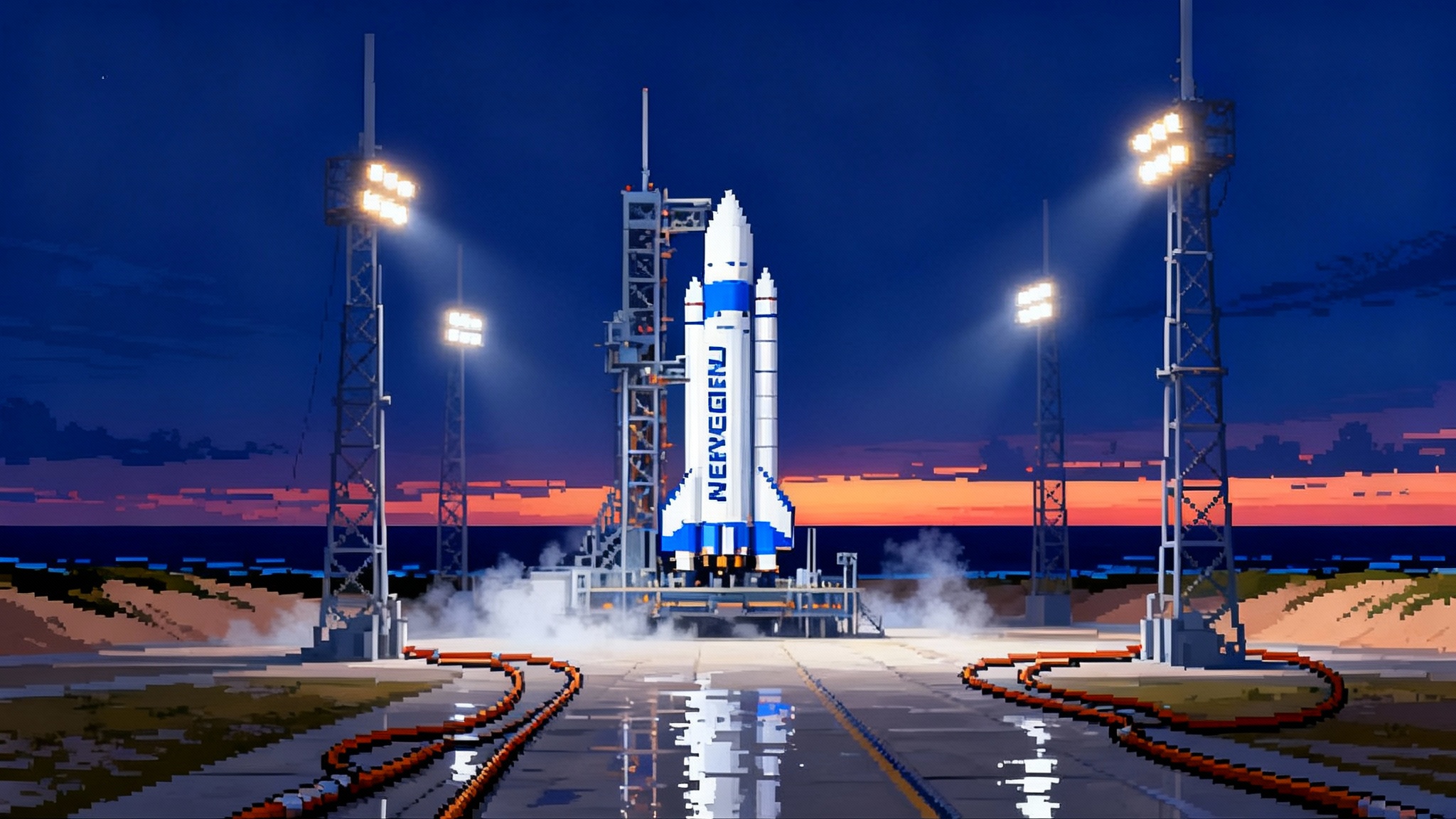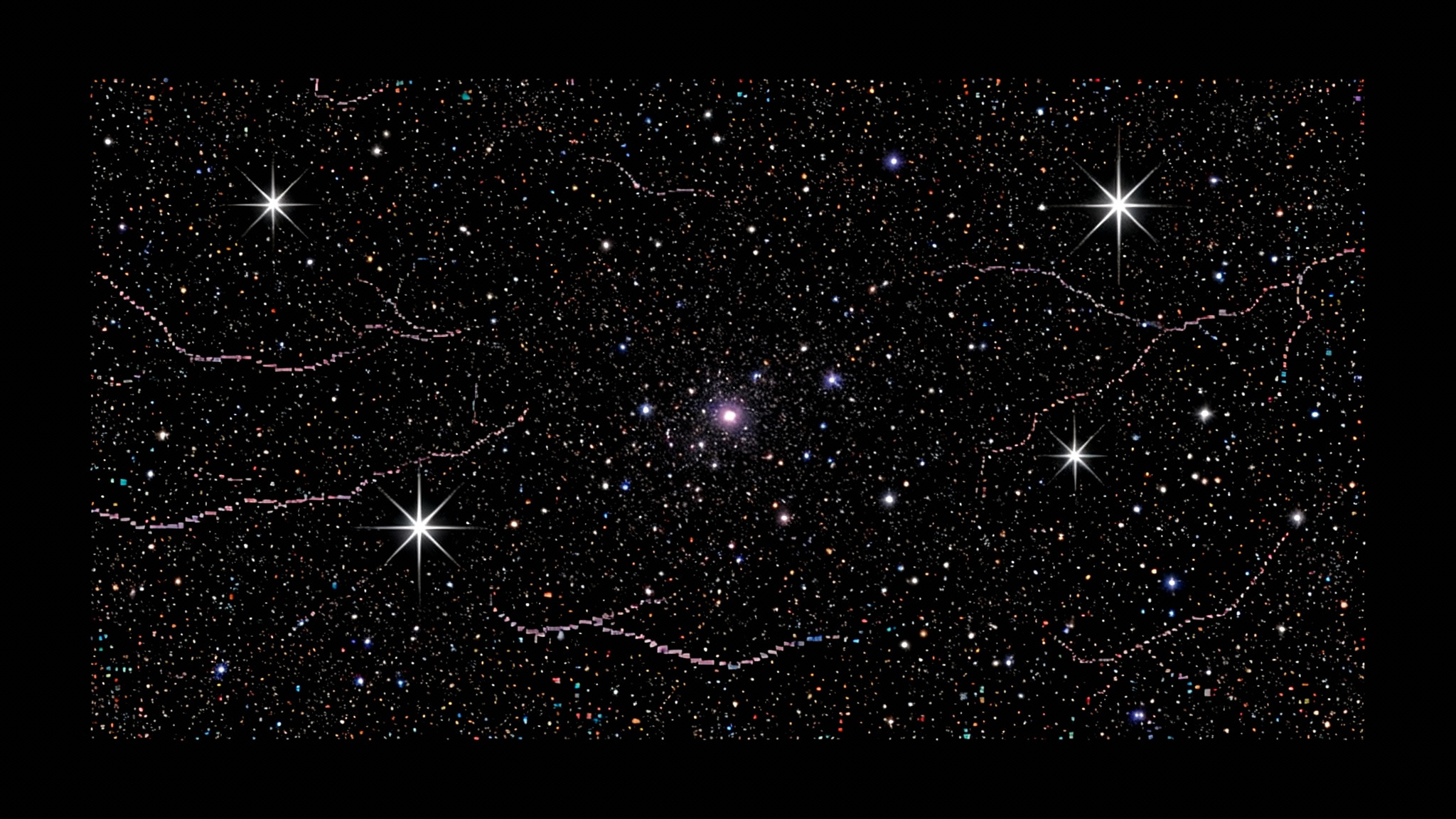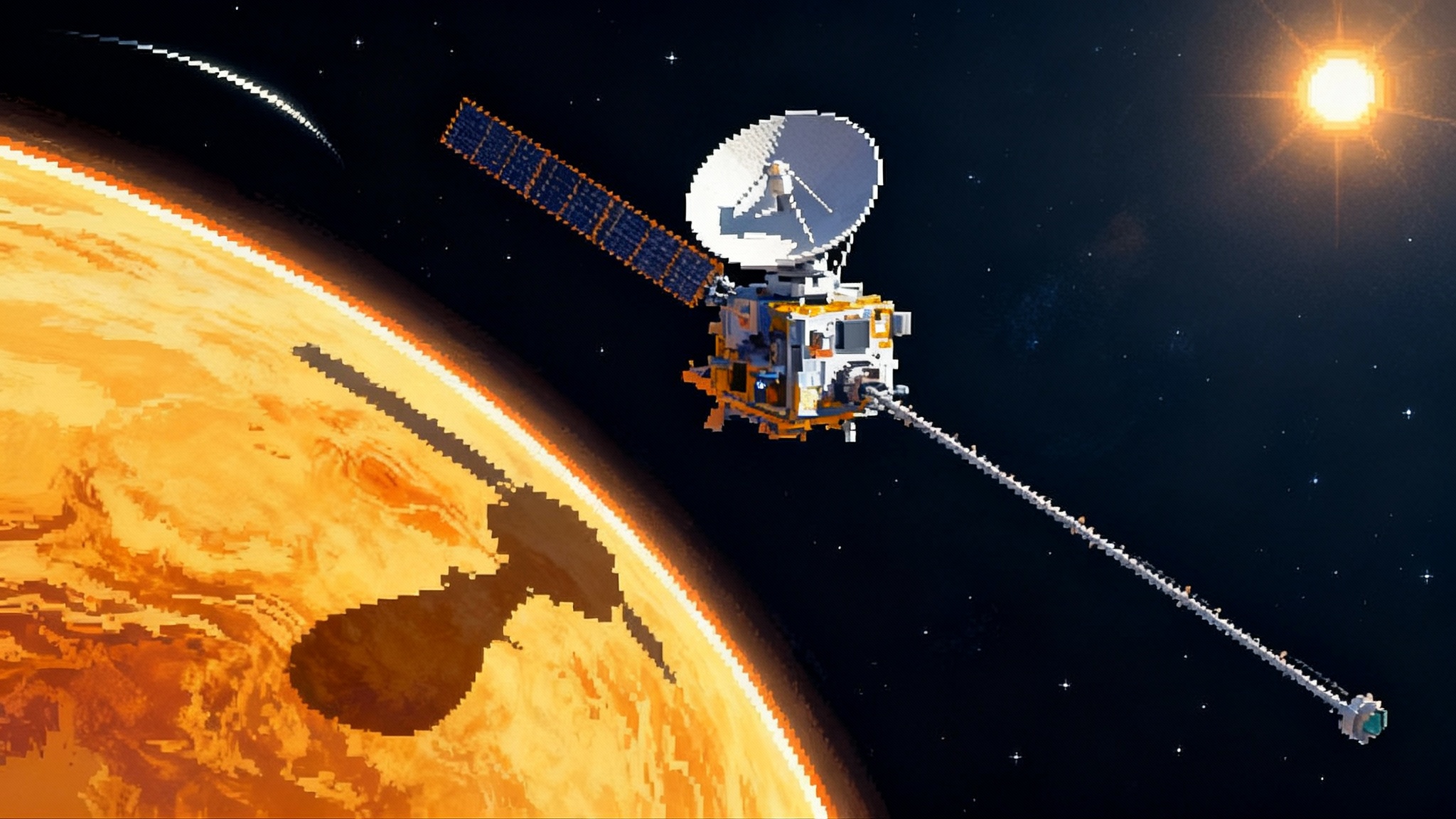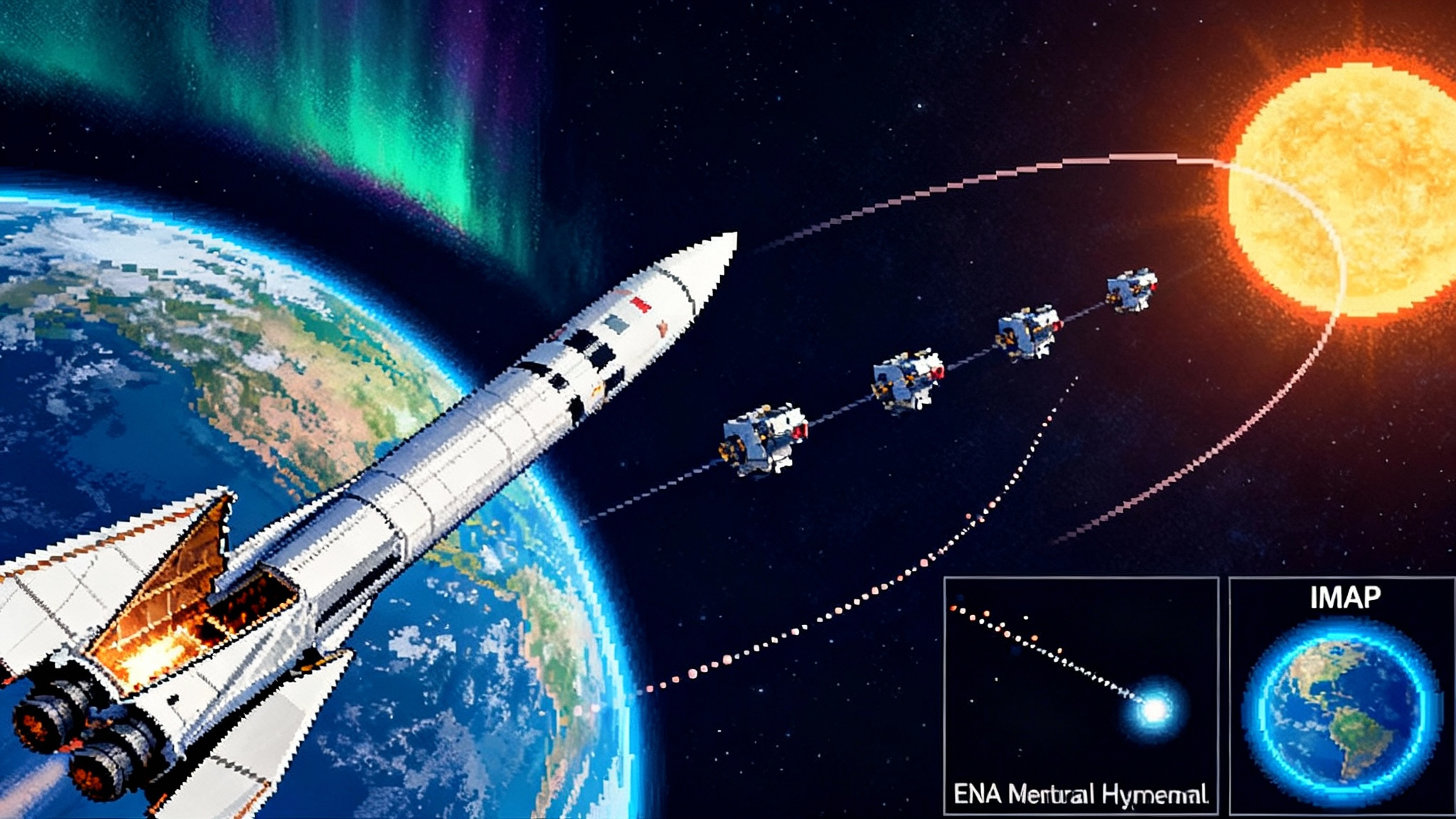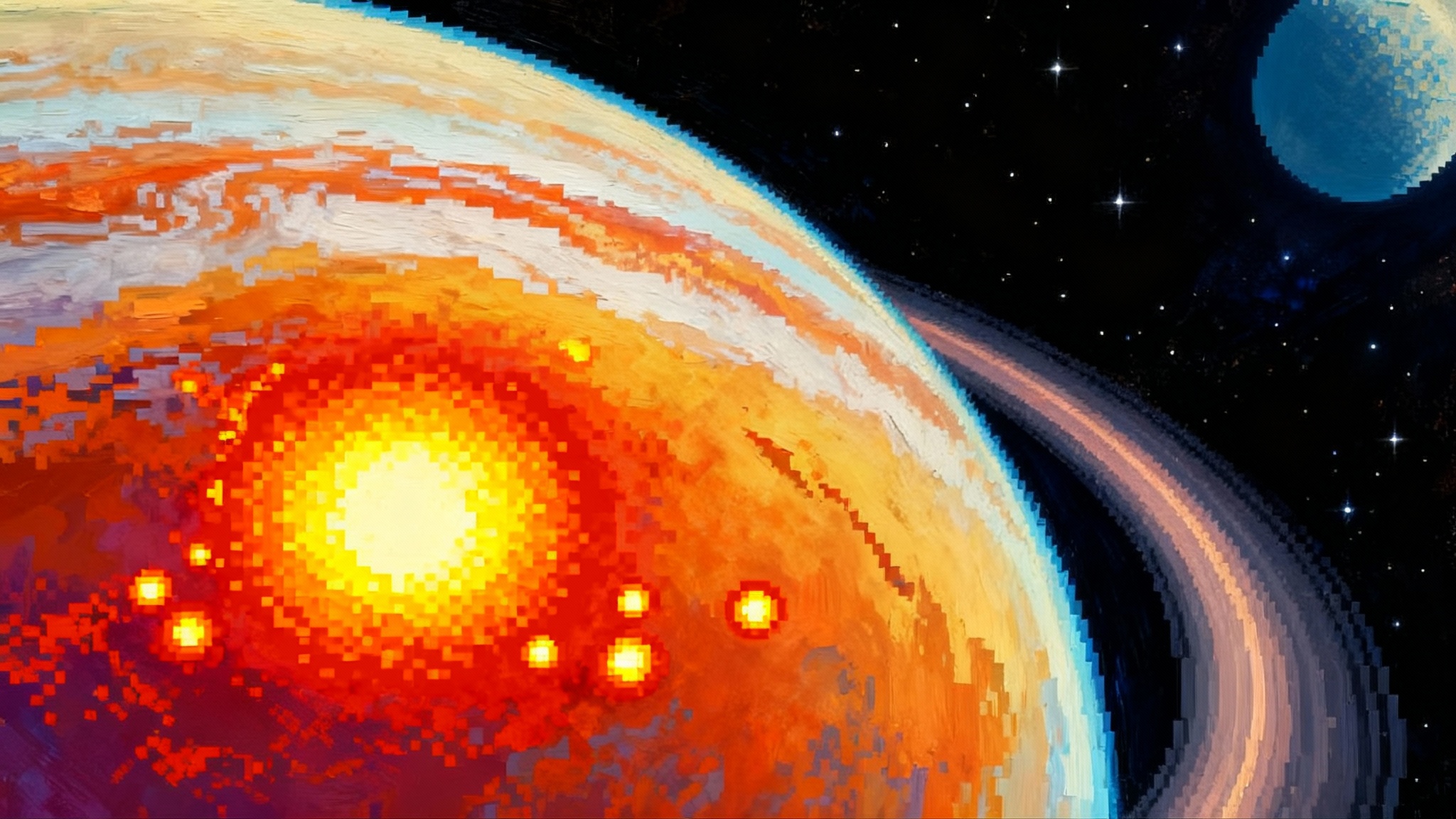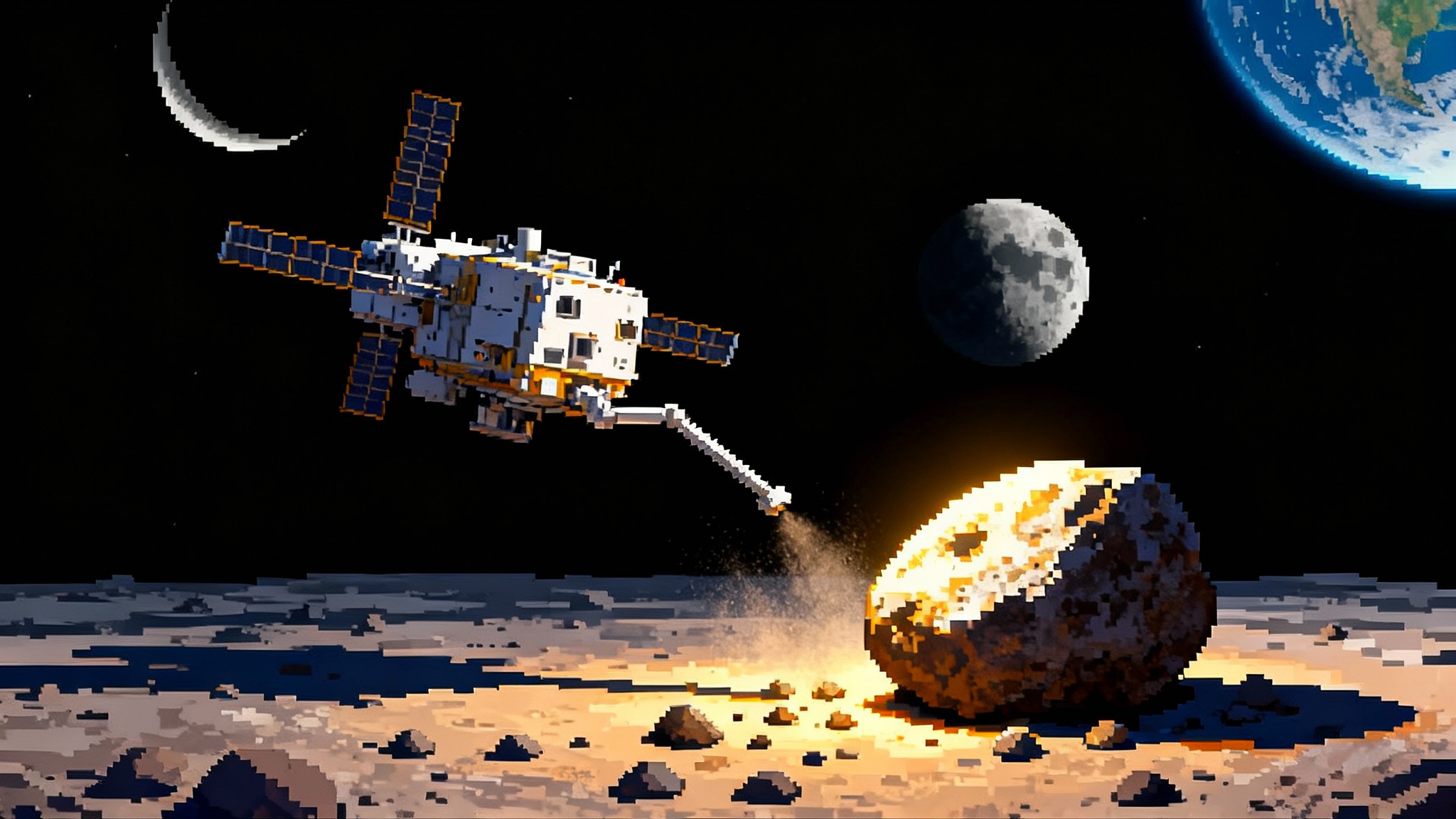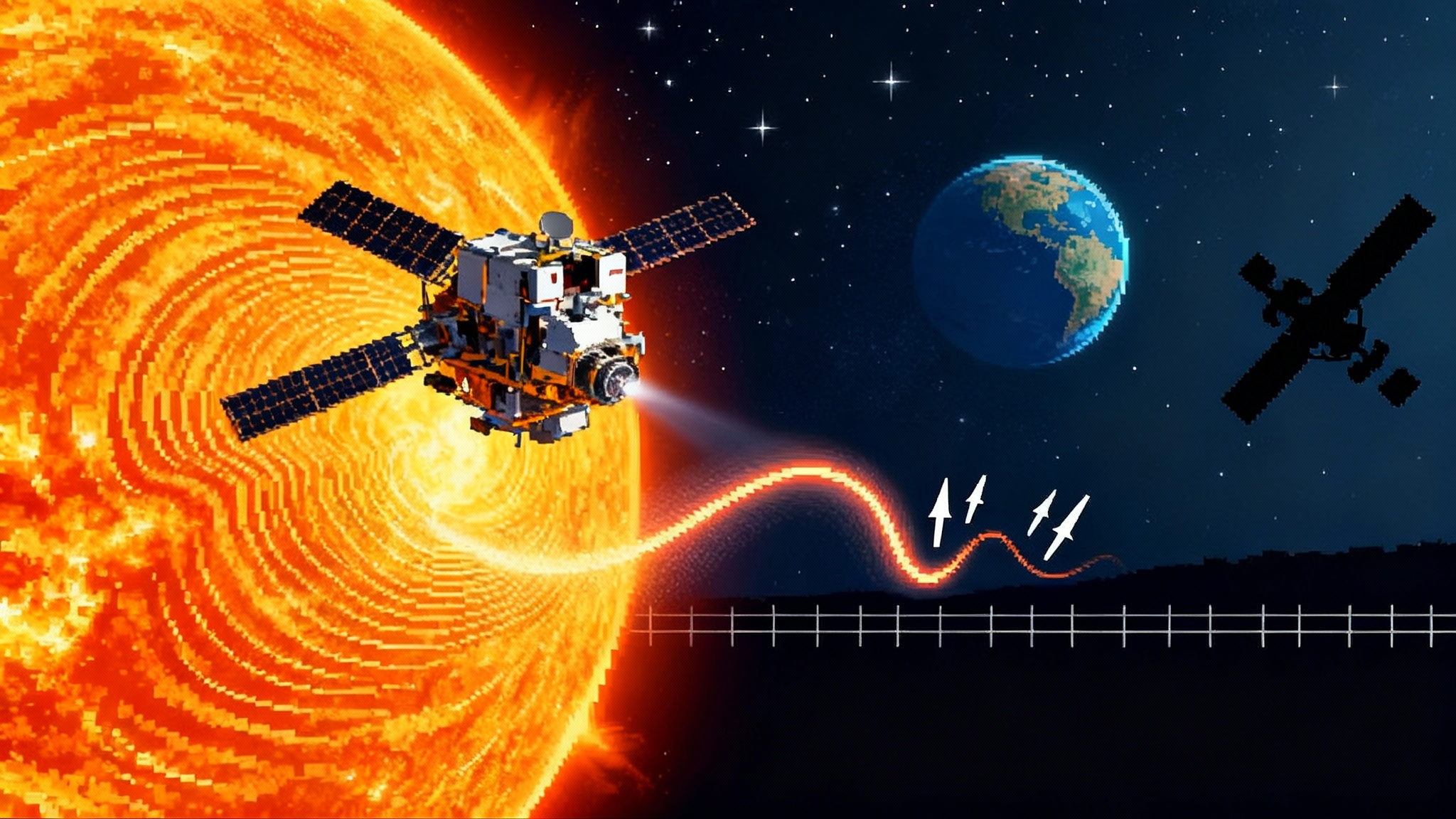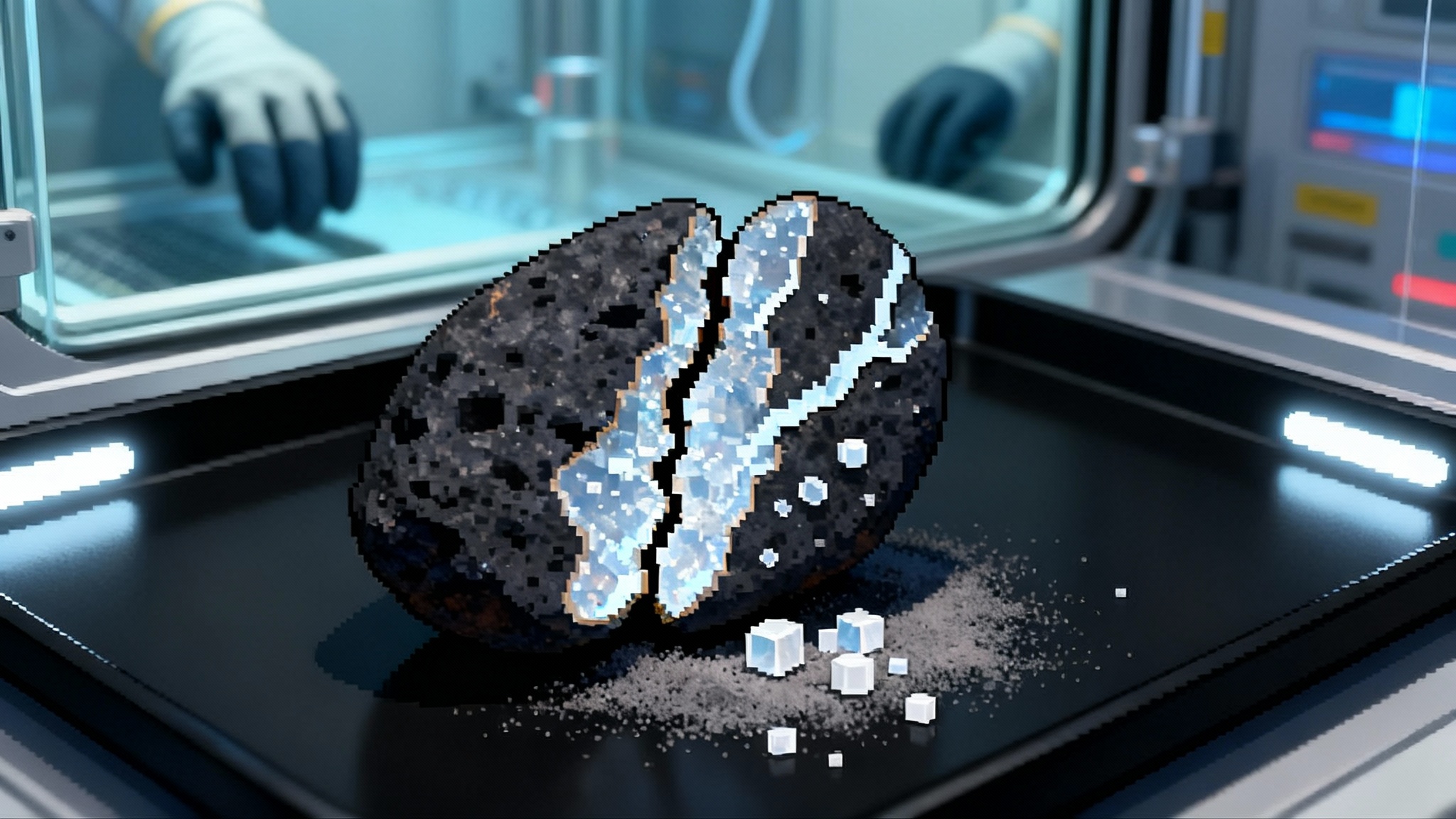TRAPPIST‑1e’s Atmosphere: JWST Hints Keep Nitrogen in Play
Fresh JWST results from September 2025 rule out hydrogen-dominated skies for TRAPPIST-1e and make a Venus or Mars style carbon dioxide blanket unlikely. A nitrogen-rich atmosphere or a bare rock remain in play, and the next JWST transits could decide it.
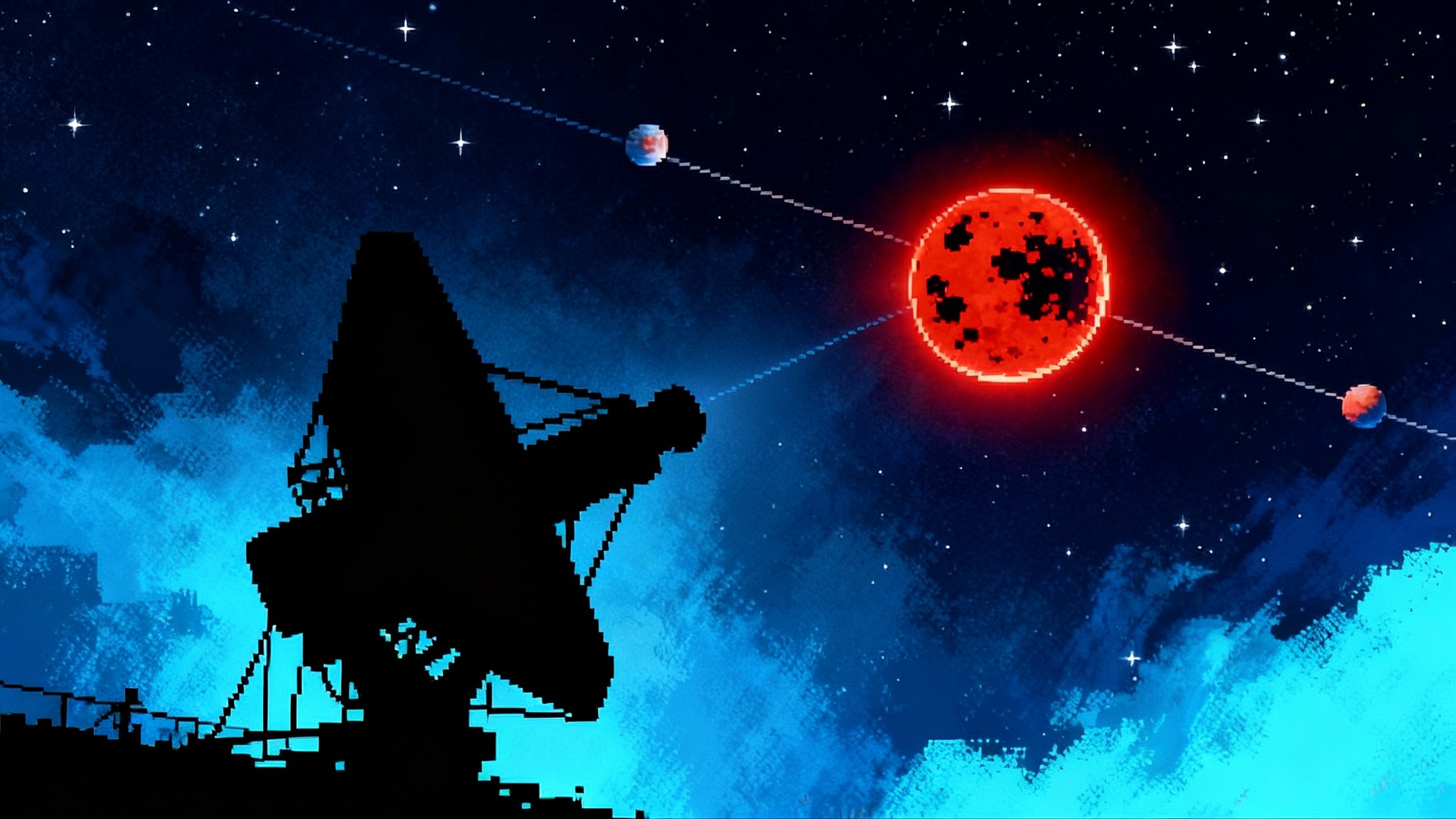
The September 2025 verdict, in plain terms
Two companion studies released in early September 2025 reshaped what TRAPPIST-1e might be breathing, if it breathes at all. The new JWST spectra do three things at once: they rule out a thick hydrogen atmosphere, they make a Venus or Mars style carbon dioxide atmosphere unlikely, and they leave room for a nitrogen-dominated sky or a bare rock scenario. For the technical core, see the Astrophysical Journal Letters analysis of transmission spectra from four 2023 JWST visits. Bottom line: no to hydrogen, weak to Venus or Mars level carbon dioxide, and still possible to nitrogen with traces of methane. For system context, our TRAPPIST-1 system guide is a useful primer.
If that sounds like a hedge, it is an informed one. The authors stress that these first four transits are not yet definitive on whether an atmosphere exists at all. But they narrowed the field and set up a strategy that could settle the question soon.
What JWST actually saw
JWST watched TRAPPIST-1e pass in front of its small, cool red dwarf star and measured how starlight filtering through the planet’s limb changed with wavelength. Some signatures were clearly absent. A hydrogen and helium cloak would produce broad features from very tall, puffy skies. Those were not there. A Venus-like or Mars-like carbon dioxide atmosphere with similar pressures should have shown strong carbon dioxide bands. The initial spectra do not favor that, though subtle or thin carbon dioxide could still hide below the current noise or behind clouds. For instrument background, see our JWST NIRSpec instrument primer.
What remains plausible is either a high mean molecular weight atmosphere dominated by nitrogen, potentially salted with a little methane or carbon dioxide, or no atmosphere at all. The current data can be fit by an almost flat line, consistent with a bare rock or with an atmosphere whose features are muted by high altitude aerosols, and by a gently wiggly line consistent with an atmosphere. The next observing campaign is designed to break that ambiguity.
The contamination puzzle: starspots versus atmospheres
Transmission spectroscopy is exquisitely sensitive, and TRAPPIST-1 is not a quiet Sun. It is an ultra-cool M dwarf with a mottled photosphere. Cooler, darker starspots and slightly hotter, brighter faculae introduce slopes and ripples into the spectrum that can masquerade as planetary signals.
Across four JWST visits in mid to late 2023, stellar contamination varied from visit to visit. That variability was both a curse and a clue. Anything that changed from one visit to the next was likely stellar. Anything that stayed the same was more likely planetary. Statistical tools helped separate star from planet as far as the data allowed. The result is not yet a chemical inventory, but it is a cleaner picture of what the planet does not have.
Calibrating the star with a planetary yardstick
TRAPPIST-1 has seven transiting planets. One of them, TRAPPIST-1b, orbits so close that repeated JWST observations point to it being a bare rock. That makes planet b an excellent calibrator of the star.
The new strategy for TRAPPIST-1e stacks the deck. JWST observes a transit of planet b, then, almost immediately, a transit of planet e. Because b is likely airless, its transmission spectrum is basically a snapshot of the star’s surface heterogeneity during that window. Subtract that snapshot from the spectrum of e, and most of the star’s imprint should cancel. What remains should be dominated by planet e. This approach required validation with other planet pairs and meticulous scheduling to catch consecutive events.
In practical terms, the limiting problem then shifts. If star features are corrected epoch by epoch using planet b, detecting an atmosphere on e becomes a matter of stacking enough clean, corrected transits to beat down random noise.
Fifteen upcoming transits that could decide it
According to the team’s public summary, JWST is in the middle of a follow-up program that will observe 15 additional transits of TRAPPIST-1e, scheduled to wrap up by the end of 2025. Crucially, these are paired with back-to-back transits of planet b to enable the star-calibration step described above. See the back-to-back transit campaign explainer for a plain-language overview of the plan.
What would count as a win for an atmosphere? Repeating absorption features at the same wavelengths across many epochs, after the planet b calibration is applied, that grow in statistical significance when the data are co-added. Signs of methane near 3.3 microns or of carbon dioxide near 4.3 microns would be obvious targets for the NIRSpec mode used so far.
Nitrogen skies, or no skies at all
If TRAPPIST-1e has an atmosphere, the September results suggest it is more likely nitrogen-dominated than hydrogen-dominated, and not a Venus-style carbon dioxide super greenhouse. Why does nitrogen matter for habitability right now?
- Pressure and water - Nitrogen sets the background pressure that helps determine if liquid water can exist at the surface.
- Greenhouse amplification - More pressure from a heavy gas like nitrogen can amplify the warming from trace gases via pressure broadening and more frequent collisions.
- Clouds and aerosols - Nitrogen influences cloud microphysics that affect reflectivity and climate.
A nitrogen-rich atmosphere with tenths of a percent of methane and a touch of carbon dioxide could, at the right pressures, keep TRAPPIST-1e temperate. Around active M dwarfs, methane is destroyed relatively quickly by ultraviolet light, so detectable methane would require replenishment from geology or biology. The current spectra do not allow a confident methane detection.
If the flat-line model wins out, TRAPPIST-1e could be a bare rock. Several inner TRAPPIST-1 planets already show signs of being airless or nearly so. High energy radiation and early flaring could have stripped lighter atmospheres long ago. Even so, the temperate planets, including e, remain the best bets for retaining secondary atmospheres outgassed from their interiors.
Why the Venus and Mars comparisons matter
Popular shorthand compares potential atmospheres to Solar System archetypes. In that light, the September 2025 results are encouraging. A Venus-like atmosphere would imply a thick, hot carbon dioxide blanket and probably an uninhabitable surface. A Mars-like atmosphere would imply a very thin carbon dioxide envelope that does little to warm the ground. Disfavoring both narrows the plausible space toward either an Earth-class, nitrogen-dominated regime with trace greenhouse gases or toward no air at all.
What to watch for as new data arrive
- Consistency across epochs - If specific spectral features repeat for e and strengthen as more transits are stacked, confidence will grow quickly.
- Cross-instrument checks - If later programs add mid-infrared coverage where other molecules absorb, that redundancy will help guard against false positives.
- The shape of features - Methane has a distinctive band near 3.3 microns, and carbon dioxide has strong bands near 4.3 microns.
- The flatness test - A robustly flat spectrum after calibrating out the star would be strong evidence against a substantial atmosphere.
A quick guide to biosignature chatter
Because TRAPPIST-1e sits in the habitable zone and now plausibly sports a nitrogen-rich sky, expect headlines about life. Read them responsibly with our guide on How to evaluate biosignatures.
- Methane alone is not a biosignature - Geology can plausibly supply methane on an active red dwarf world. Look for methane with carbon dioxide sustained together over time.
- Oxygen and ozone are tricky - Oxygen can be produced abiotically when water is split and hydrogen escapes. Ozone is a proxy for oxygen and can be influenced by stellar activity.
- Demand repeatability - In an active-star system, the most important safeguard is seeing the same planetary features persist across many transits while the stellar fingerprints change.
What it means for habitability right now
The September 2025 results do not prove that TRAPPIST-1e is habitable, but they tilt the odds toward scenarios that JWST can test soon. If the planet has a nitrogen-rich atmosphere with the right pressure and a small greenhouse boost from methane or carbon dioxide, then liquid water at the surface remains in play. If the planet is bare, that will steer searches toward quieter stars or cooler TRAPPIST-1 worlds where atmospheric stripping was less severe.
The bottom line
- Hydrogen skies are out for TRAPPIST-1e, thick carbon dioxide looks unlikely, and nitrogen-rich air or a bare rock remain plausible.
- Stellar contamination is the main obstacle, but the back-to-back calibration using likely airless planet b is a powerful workaround.
- Fifteen more transits through late 2025 are designed to decisively confirm or refute an atmosphere on TRAPPIST-1e.
We do not need to wait long for clarity. JWST is already on the case, and the next set of spectra could turn a whisper into a readable message from a nearby world.

